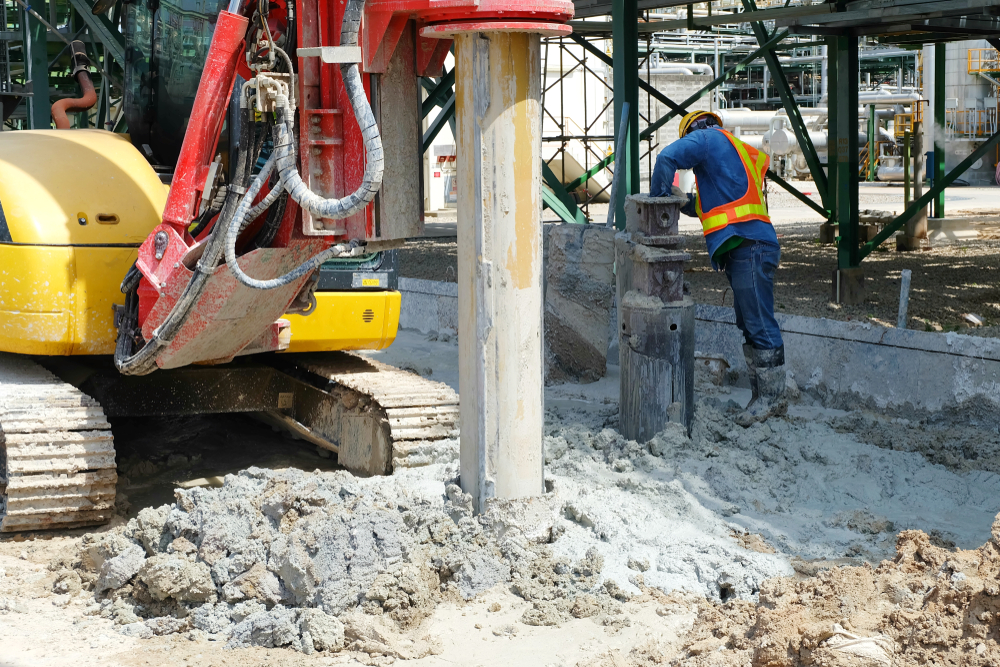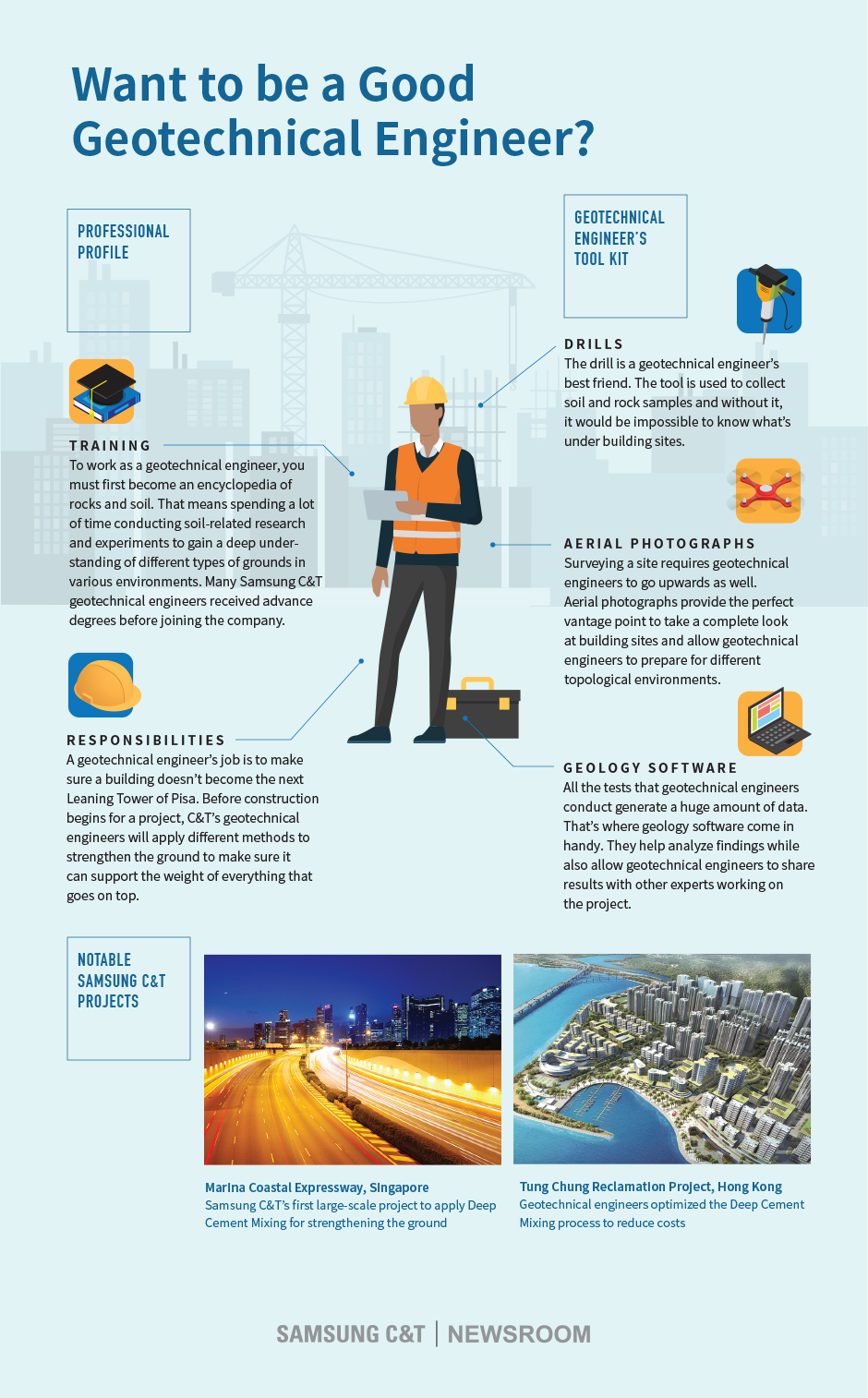Facts About Geotechnical Engineering For Construction Projects Revealed
Facts About Geotechnical Engineering For Construction Projects Revealed
Blog Article
Get This Report on Geotechnical Engineering For Construction Projects
Table of Contents8 Simple Techniques For Geotechnical Engineering For Construction ProjectsThe 9-Minute Rule for Geotechnical Engineering For Construction ProjectsSome Known Questions About Geotechnical Engineering For Construction Projects.The smart Trick of Geotechnical Engineering For Construction Projects That Nobody is Talking AboutThe Basic Principles Of Geotechnical Engineering For Construction Projects The Single Strategy To Use For Geotechnical Engineering For Construction ProjectsMore About Geotechnical Engineering For Construction Projects
and Kovacs, W. (1981 ), An Introduction to Geotechnical Engineering, Prentice-Hall, Inc. Deep Check Technology (2023 ): Deep Scan Tech uncovers hidden structures at the website of Denmark's highest structure. "Geofrost Coring". GEOFROST. Gotten 20 November 2020. Han, Jie (2015 ). Principles and Technique of Ground Renovation. Wiley. ISBN 9781118421307. RAJU, V. R.Ground Renovation Technologies and Case Histories. Singapore: Research Study Publishing Providers. p. 809. ISBN978-981-08-3124-0. Ground Renovation Principles And Applications In Asia. Pariseau, William G. (2011 ). Style analysis in rock mechanics. CRC Press. Hegde, A.M. and Palsule P (Geotechnical Engineering for Construction Projects).S. (2020 ), Performance of Geosynthetics Reinforced Subgrade Subjected to Repeated Lorry Loads: Experimental and Numerical Research Studies.
Cengage Discovering, Stamford, 666 p. Atkinson, J., 2007. The auto mechanics of soils and foundations. The Observational Technique in ground engineering principles and applications.
Not known Factual Statements About Geotechnical Engineering For Construction Projects
Research laboratory and area screening plays a vital duty in this procedure. By removing samples from the earth's subsurface and applying a collection of tests, geotechnical designers can anticipate the behaviour of soil layers and assess their suitability for various construction efforts. The essence of geotechnical engineering in civil engineering can not be overemphasized, attributable to numerous variables: The initial action in any geotechnical research involves figuring out the soil type at the building site.
Comprehending these characteristics ensures that just appropriate dirt types are picked for the advancement, therefore averting prospective structural failings. The structure serves as the bedrock of any kind of building task. Picking the suitable foundation type is a decision that hinges on the detailed evaluation supplied by geotechnical design. This guarantees the longevity and stability of frameworks by suiting the tons they will bear.

Geotechnical site examination is a crucial action in the planning and implementation of any building project. It entails the collection and evaluation of data connected to the physical residential or commercial properties of soil and rock below a recommended building and construction site. This details is vital for the layout and building and construction of risk-free, secure, and sustainable structures.
Rumored Buzz on Geotechnical Engineering For Construction Projects
, additionally understood as subsurface exploration, involves a collection of tasks aimed at establishing the soil, rock, and groundwater problems at a construction website. The primary goals are to recognize potential geotechnical threats, assess the design buildings of subsurface materials, and provide suggestions for the style and building of structures, preserving walls, and other structures.
This may include geological maps, airborne photos, previous examination reports, and historical data. The workdesk study assists in recognizing possible geotechnical issues and intending the subsequent fieldwork. Complying with the desk study, a website reconnaissance is carried out to visually inspect the site and its surroundings. This includes observing the topography, water drainage patterns, existing frameworks, plant life, and any kind of signs of instability or disintegration.
The Best Strategy To Use For Geotechnical Engineering For Construction Projects
Superficial examination pits are excavated to straight observe and sample the dirt and rock. This approach serves for examining the upper layers of the subsurface and recognizing near-surface dangers. Non-invasive geophysical approaches, such as seismic refraction, ground-penetrating radar (GPR), and electric resistivity tomography (ERT), are made use of to map subsurface conditions and discover anomalies.
Dirt and rock samples gathered during the area investigation are subjected to laboratory screening to determine see post their physical and mechanical residential properties. These examinations give necessary data for geotechnical evaluation and layout.
The main advantage of geotechnical site examination is ensuring the safety and security of structures. By comprehending the subsurface problems, designers can make structures and various other structural elements that can stand up to the tons and environmental pressures they will certainly go through. This reduces the threat of negotiation, decrease, and structural failure.
Getting My Geotechnical Engineering For Construction Projects To Work
For instance, comprehending soil features can assist the option of excavation methods, dewatering approaches, and ground improvement actions. This makes sure efficient and secure building techniques. Geotechnical site examinations are usually needed by constructing codes and regulations. Complying with these requirements makes certain compliance with legal and safety and security criteria, avoiding prospective lawful liabilities and project hold-ups.
This information is vital for job managers, designers, and specialists in establishing sensible schedules, spending plans, and backup plans. Geotechnical Engineering for Construction Projects. Skyscraper in a Coastal AreaIn a coastal city, a skyscraper household building was intended on a website with presumed loosened sand deposits and a high water table. An in-depth geotechnical examination, including borehole drilling, CPT, and geophysical surveys, was conducted
Some Ideas on Geotechnical Engineering For Construction Projects You Need To Know
Based upon these searchings for, the foundation layout was modified to include deep heap structures extending into stable strata, and ground renovation strategies, such as vibro-compaction, were executed to minimize liquefaction dangers. This positive approach ensured the safety and stability of the building while staying clear of costly post-construction remediation. Facilities Development on a Sloping TerrainA major infrastructure project, involving the building of a highway and bridges, was intended on a sloping terrain with steep slopes.

The Leaning Tower of Pisa (Italy), a legendary building marvel, is infamous for its unintentional tilt from significant geotechnical issues. The tower's foundation was improperly developed to handle the soft, unpredictable soil underneath it, leading to unequal negotiation and its unique page lean. Our globe is populated with outstanding infrastructure projectsfrom towering high-rises to stretching bridgesall standing statement to the evolution of the numerous construction equipment and approaches readily available.
Geotechnical engineering is a specific area within civil engineering that concentrates on studying the behavior of planet materials. This branch dives deep into the groundinvestigating how the dirt, rock, and groundwater at a building and construction website can influenceand be affected bythe framework that we put up on and into them. Before a single block is laid or a concrete structure put, geotechnical designers probe right into the earthgathering important information concerning the website's dirt composition, rock structure, and groundwater levels.
Some Known Facts About Geotechnical Engineering For Construction Projects.

is a device used to assess the honesty and load-bearing ability of stacks during installation, leveraging the principle of wave breeding. It maximizes building efficiency by giving real-time examinations, thus making certain risk-free and effective pile foundations. One of the sensible applications of geotechnical engineering entails making a decision and executing the ideal techniques for structure building.
Load driving represents greater than the mere act of putting architectural elements into the ground. However, it is a carefully coordinated process of transferring a framework's tons past the less stable dirt layers closer to the surfacedown to the extra significant strata that exist beneath. When it comes to stack driving, think about just how geotechnical engineers adeptly use this strategy to evenly disperse the browse around this site structure's weight.
Report this page